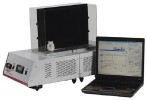Authors
Fisher PW, Zhao Y, Rico MC, Massicotte VS, Wade CK, Litvin J, Bove GM, Popoff SN, Barbe MF.
Lab
Department of Anatomy and Cell Biology, Temple University School of Medicine, Philadelphia, PA, USA
Journal
J Cell Commun Signal.
Abstract
Key clinical features of cumulative trauma disorders include pain, muscle weakness, and tissue fibrosis, although the etiology is still under investigation. Here, we characterized the temporal pattern of altered sensorimotor behaviors and inflammatory and fibrogenic processes occurring in forearm muscles and serum of young adult, female rats performing an operant, high repetition high force (HRHF) reaching and grasping task for 6, 12, or 18 weeks. Palmar mechanical sensitivity, cold temperature avoidance and spontaneous behavioral changes increased, while grip strength declined, in 18-week HRHF rats, compared to controls. Flexor digitorum muscles had increased MCP-1 levels after training and increased TNFalpha in 6-week HRHF rats. Serum had increased IL-1beta, IL-10 and IP-10 after training. Yet both muscle and serum inflammation resolved by week 18. In contrast, IFN? increased at week 18 in both muscle and serum. Given the anti-fibrotic role of IFN?, and to identify a mechanism for the continued grip strength losses and behavioral sensitivities, we evaluated the fibrogenic proteins CCN2, collagen type I and TGFB1, as well as the nociceptive/fibrogenic peptide substance P. Each increased in and around flexor digitorum muscles and extracellular matrix in the mid-forearm, and in nerves of the forepaw at 18 weeks. CCN2 was also increased in serum at week 18. At a time when inflammation had subsided, increases in fibrogenic proteins correlated with sensorimotor declines. Thus, muscle and nerve fibrosis may be critical components of chronic work-related musculoskeletal disorders. CCN2 and substance P may serve as potential targets for therapeutic intervention, and CCN2 as a serum biomarker of fibrosis progression
BIOSEB Instruments Used:
Thermal Place Preference, 2 Temperatures Choice Nociception Test (BIO-T2CT)

 Pain - Thermal Allodynia / Hyperalgesia
Pain - Thermal Allodynia / Hyperalgesia Pain - Spontaneous Pain - Postural Deficit
Pain - Spontaneous Pain - Postural Deficit Pain - Mechanical Allodynia / Hyperalgesia
Pain - Mechanical Allodynia / Hyperalgesia Learning/Memory - Attention - Addiction
Learning/Memory - Attention - Addiction Physiology & Respiratory Research
Physiology & Respiratory Research
 Pain
Pain Central Nervous System (CNS)
Central Nervous System (CNS) Neurodegeneration
Neurodegeneration Sensory system
Sensory system Motor control
Motor control Mood Disorders
Mood Disorders Other disorders
Other disorders Muscular system
Muscular system Joints
Joints Metabolism
Metabolism Cross-disciplinary subjects
Cross-disciplinary subjects Preclinical studies and opioids: role in crisis management in the United States
Preclinical studies and opioids: role in crisis management in the United States 